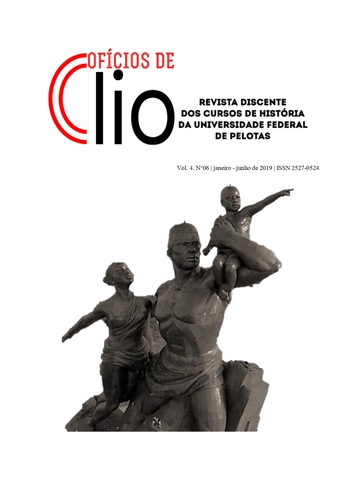O Julgamento do Diabo: análise da figura demoníaca em Nardo Di Cione e Michelangelo, entre a Peste Bubônica e o Inferno de Dante (1350 - 1550)
Resumo
Este artigo apresenta alguns resultados de pesquisa que buscou analisar de que forma o Diabo foi representado em duas fontes pictóricas com temática escatológica, uma de meados do século XIV e outra de meados do século XVI. As fontes são analisadas através do método iconográfico e iconológico proposto por Erwin Panofsky (1892 – 1968), visto que os documentos são pinturas murais. Ademais, o estudo é perspectivado pela influência da Peste Bubônica na forma que a figura demoníaca é representada, além de estabelecer relações entre elas com outro tipo de expressão cultural do período, a obra literária A Divina Comédia, escrita por Dante Alighieri (1265 – 1321).
Palavras-chave: Diabo, Peste Bubônica, Idade Média, Renascimento.
Abstract
This article presents some results from the study that sought to analyze how the Devil was represented in two pictorial sources with an eschatological theme, one from the middle of the 14th century and another from the middle of the 16th century. The sources were analyzed through the iconographic and iconological method proposed by Erwin Panofsky (1892 – 1968), since the documents are mural paintings. In addition, the study was projected by the influence of the Bubonic Plague in the form that the demonic figure is represented, besides establishing relations between them with another type of cultural expression of the period, the literary work The Divine Comedy, written by Dante Alighieri (1265 – 1321).
Keywords: Devil, Bubonic Plague, Middle Ages, Renaissance.
Autores que publicam nesta revista concordam com os seguintes termos:
- Autores mantém os direitos autorais e concedem à revista o direito de primeira publicação, com o trabalho simultaneamente licenciado sob a LICENÇA CREATIVE COMMONS ATTRIBUTION que permite o compartilhamento do trabalho com reconhecimento da autoria e publicação inicial nesta revista.
- Autores têm autorização para assumir contratos adicionais separadamente, para distribuição não-exclusiva da versão do trabalho publicada nesta revista (ex.: publicar em repositório institucional ou como capítulo de livro), com reconhecimento de autoria e publicação inicial nesta revista.
- Autores têm permissão e são estimulados a publicar e distribuir seu trabalho online (ex.: em repositórios institucionais ou na sua página pessoal) a qualquer ponto antes ou durante o processo editorial, já que isso pode gerar alterações produtivas, bem como aumentar o impacto e a citação do trabalho publicado (Veja O EFEITO DO ACESSO LIVRE).


